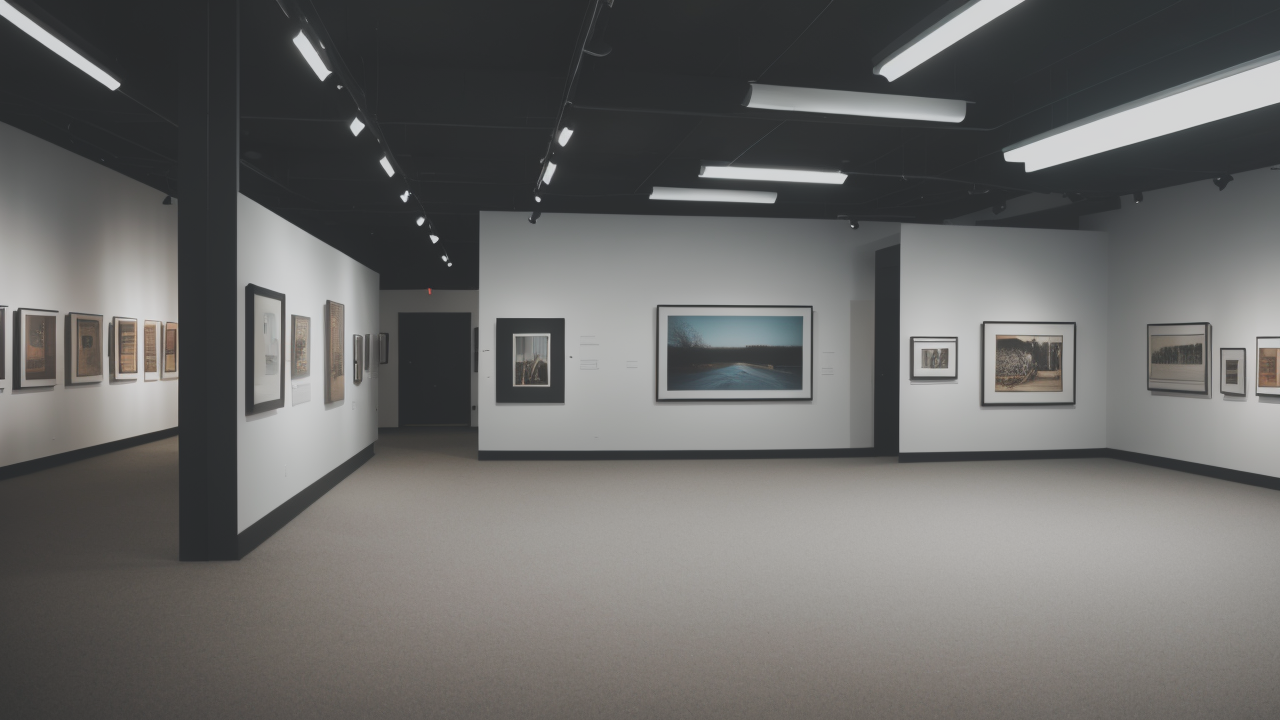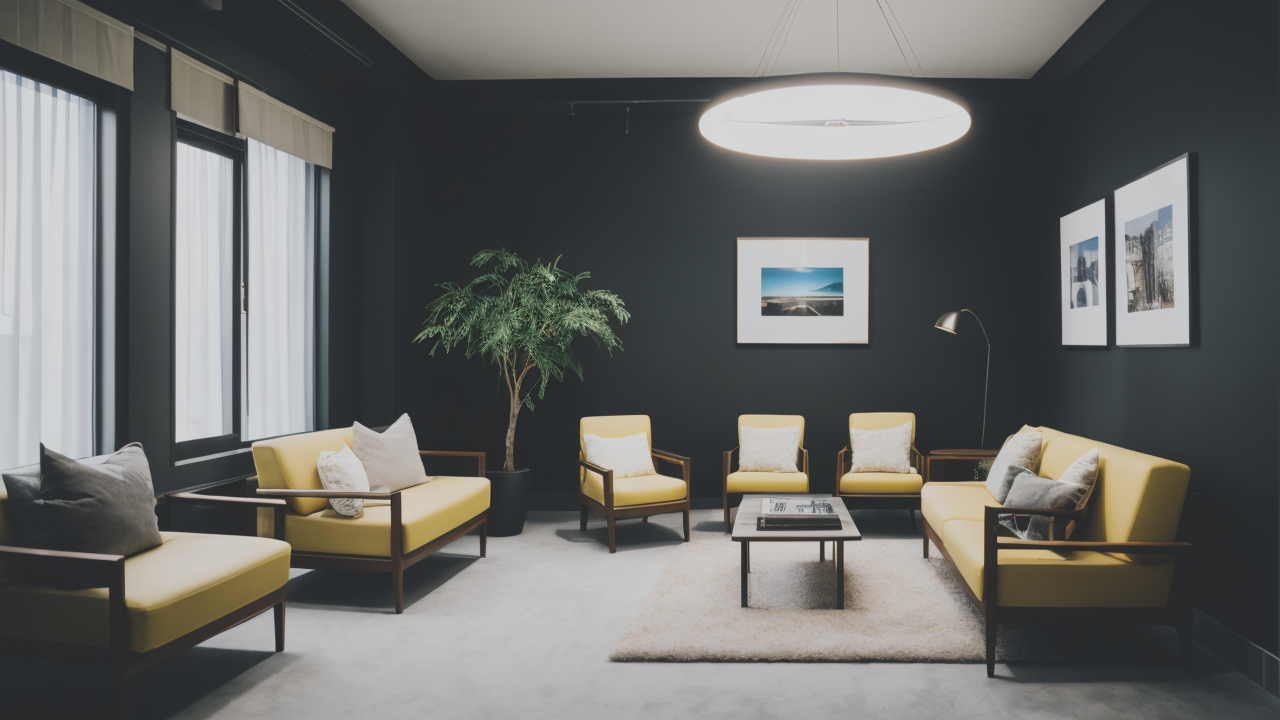
Mastering the Modern Gallery Wall: A Guide to Textures and Techniques
The Rise of Nawabi Minimalism in Modern Home Decor
Understanding the Concept of Nawabi Minimalism
Nawabi Minimalism is a fresh take on the modern gallery wall. It blends Indian luxury with simple design. This style creates elegant spaces with fewer elements. It often uses muted colors and clean lines. The focus is on making a big impact with less.

Key features of Nawabi Minimalism include:
- Geometric patterns inspired by Islamic art
- Calligraphy in flowing scripts
- Abstract forms of traditional motifs
- Subtle use of gold or silver accents
In home decor, Nawabi Minimalism creates calm and sophisticated spaces. It works well in both large homes and small apartments. This style can transform a plain wall into a striking focal point. It's perfect for those who want a touch of culture without clutter.
The Historical Significance of Minimalist Art in Indian Culture
Minimalism has deep roots in Indian art. Ancient Indian philosophy valued simplicity. This idea shaped art for centuries. Even complex designs were based on simple forms. The Mughal era refined this approach. Artists created intricate works with balance and restraint.
In modern times, Indian artists embraced global minimalist trends. They mixed these with traditional elements. This fusion laid the groundwork for Nawabi Minimalism. It shows how old ideas can inspire new art forms.
Examples of minimalism in Indian art history include:
- Geometric patterns in temple architecture
- Simple yet powerful sculptures
- Abstract forms in textile designs
Today's Nawabi Minimalist pieces often nod to this rich history. They capture the essence of Indian art without overwhelming the viewer.
Nawabi Minimalism vs. Traditional Wall Art
Nawabi Minimalism stands apart from traditional wall art. Traditional pieces often fill space with detail. Nawabi Minimalist works embrace empty space. They use fewer elements to make a statement. This creates a stark contrast in how they affect a room.
Key differences include:
- Color use: Traditional art often uses many bright colors. Nawabi Minimalism prefers neutral tones with occasional bold accents.
- Subject matter: Traditional art might show detailed scenes. Nawabi Minimalism focuses on abstract concepts or single objects.
- Texture: While traditional art can be very textured, Nawabi Minimalism tends to be smooth and uniform.
- Frame style: Traditional art often has ornate frames. Nawabi Minimalist pieces use simple frames or none at all.
Despite these differences, Nawabi Minimalism doesn't reject tradition. It reinterprets classic elements for modern spaces. This makes it a bridge between past and present. It appeals to those who value both heritage and contemporary design.
The Impact of Nawabi Minimalism on the Contemporary US Art Scene
The Intersection of Indian Art Traditions and American Home Decor
Nawabi Minimalism is making waves in US homes. It offers a fresh look for modern gallery walls. This style brings a touch of Indian elegance to American spaces. It fits well with the trend towards global decor. Many US homeowners are drawn to its mix of cultural depth and clean design.

In American homes, Nawabi Minimalist pieces often serve as focal points. They add interest without overwhelming a room. This works well in urban apartments where space is tight. A single piece can transform a wall, creating a sophisticated look.
Ways to incorporate Nawabi Minimalism in American homes:
- Use a large Nawabi Minimalist print as a centerpiece
- Create a small gallery wall with minimalist Indian-inspired art
- Add subtle metallic accents to complement the art
- Pair with simple, modern furniture to enhance the minimalist feel
This style shows how different cultures can blend seamlessly in home decor. It's a perfect fit for those seeking a unique, global aesthetic.
Nawabi Minimalism and its Role in Interior Design Trends
Nawabi Minimalism is shaping US interior design trends. It offers a unique take on the minimalist movement. This style appeals to those who want to declutter without losing character. It fits well with the current focus on mindful living and quality over quantity.
Key trends influenced by Nawabi Minimalism include:
- Use of large, statement pieces in otherwise simple rooms
- Incorporation of subtle metallic accents, especially gold
- Preference for neutral color schemes with one or two bold elements
- Integration of cultural motifs in abstract, simplified forms
Designers appreciate how versatile this style is. It can work in various settings, from modern lofts to traditional homes. Nawabi Minimalism also pairs well with other design styles. It can add depth to Scandinavian minimalism or soften industrial decor.
How Nawabi Minimalism is Influencing Art Galleries and Collectors
Art galleries across the US are embracing Nawabi Minimalism. Many now feature dedicated exhibitions. Collectors are drawn to its unique aesthetic and cultural significance. The style's ability to blend with various decor makes it highly marketable.
Nawabi Minimalist pieces are becoming prized in collections. They offer a fresh perspective on contemporary art. Galleries report growing interest from diverse buyers. New collectors find it accessible, while seasoned ones appreciate its depth.
Impact on the art world:
- Increased representation of Indian-inspired minimalist art
- Growing demand for pieces that blend cultural elements with modern design
- Shift towards simpler gallery layouts to showcase minimalist works
- Rise in collaborations between Indian artists and American galleries
This trend is changing how galleries display art. Many adopt a more minimalist approach to curation. They give each piece more space, echoing the style's principles. This shift allows viewers to focus on each work without distraction.
Implementing Nawabi Minimalism in Home and Commercial Spaces
Step-by-Step Guide to Incorporating Nawabi Minimalism
- Start with a clean slate: Clear your walls and choose a neutral paint color.
- Select a focal piece: Choose one large Nawabi Minimalist artwork as your centerpiece.
- Keep it simple: Limit additional decor to maintain a clean look.
- Add subtle texture: Use materials like silk or brushed metal for depth.
- Embrace negative space: Leave plenty of empty wall area around your art.
- Use metallic accents sparingly: A touch of gold or silver can enhance the luxe feel.
- Balance with natural elements: Add plants to soften the minimalist aesthetic.
- Consider lighting: Use soft, warm lights to highlight your artwork.
- Incorporate complementary furniture: Choose simple, clean-lined pieces.
- Evolve slowly: Start in one room and gradually extend the style throughout your space.
Remember, the key is to create impact with less. Let each piece have room to breathe and make a statement.

Case Studies: Successful Nawabi Minimalism Installations
Case Study 1: Modern Loft Transformation
A New York loft owner embraced Nawabi Minimalism. They chose a large, abstract piece inspired by Mughal patterns. The artwork featured gold leaf on a neutral background. Simple, floating shelves complemented the piece. The result was a sophisticated space that felt both modern and timeless.
Case Study 2: Tech Office Redesign
A Silicon Valley company incorporated Nawabi Minimalism in their office. They used large-scale geometric art in common areas. Meeting rooms featured subtle calligraphy-inspired wall sculptures. Employees reported feeling more focused and inspired in the new environment.
Case Study 3: Boutique Hotel Lobby
A Miami boutique hotel embraced Nawabi Minimalism in its lobby. A striking gold-leaf mural became the centerpiece. It drew inspiration from traditional Indian motifs. The rest of the space used simple, clean lines. This created a memorable first impression for guests, blending luxury with modern simplicity.
Future Outlook: The Evolving Landscape of Nawabi Minimalism
Nawabi Minimalism is set to grow in the US art and design scene. As global influences increase, this style offers a unique cultural fusion. It appeals to those seeking sophistication with a touch of exoticism. The style will likely evolve, incorporating new ideas while keeping its core principles.
Future trends may include:
- Use of sustainable materials in Nawabi Minimalist art
- Integration of digital elements in minimalist designs
- Collaborations between Indian artists and American designers
- Expansion into other design areas, like fashion and product design
As awareness grows, we'll see more diverse interpretations. Artists may push boundaries, finding new ways to express Nawabi Minimalism. This evolution will keep the style fresh and relevant in contemporary art.
The ongoing exchange between Indian and US cultures will shape this trend. As more people seek meaningful, globally-inspired decor, Nawabi Minimalism is well-positioned. Its ability to create serene, sophisticated spaces ensures its place in design for years to come.


